| |
|
|
|
|
|
|
|
|
|
|
|
| |
| |
 |
|
| |
田润德
编译
文/图 2020-05-29 19:36 |
|
| |
|
|
|
|
| |
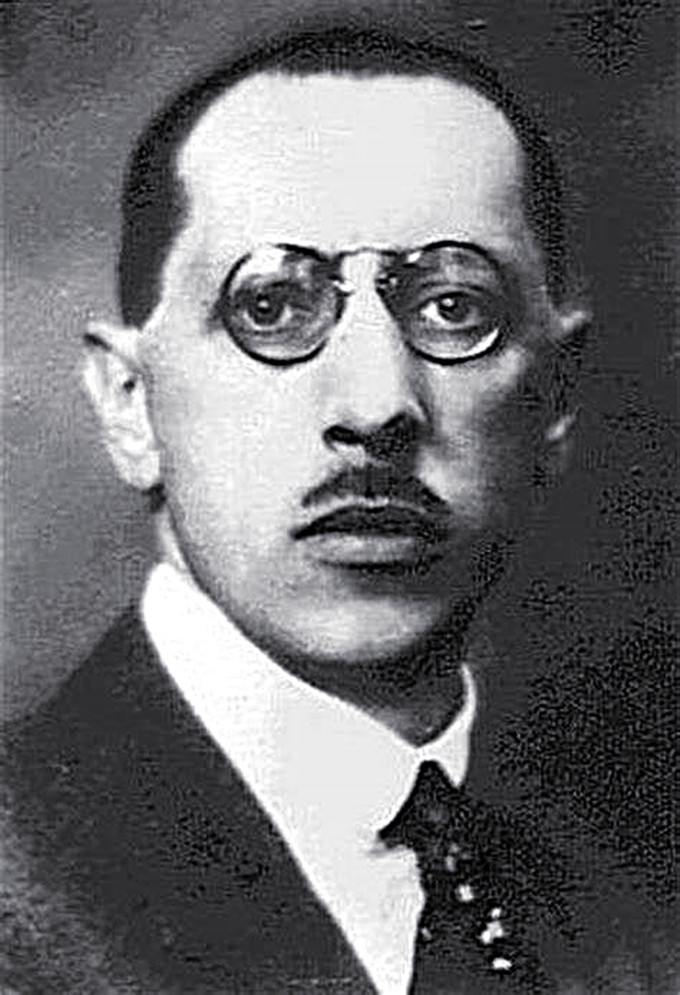 |
|
|
|
| |
伊戈尔·斯特拉文斯基(Igor Stravinsky,1882-1971) |
|
|
|
| |
|
|
|
|
| |
斯特拉文斯基 春之祭 音乐会与纪录片 旧金山交响乐团 |
|
|
|
| |
大约一百年前,伊戈尔·斯特拉文斯基(Igor
Stravinsky)的芭蕾舞剧《春之祭》(the Rite of
Spring)震惊了西方世界。迈克尔·蒂尔森·托马斯在圣彼得堡和巴黎的幕后探索这部作品的创作精神,以及震撼整个音乐世界的首演之夜。
附加功能:
斯特拉文斯基(Stravinsky)的《春之祭》(The Rite of Spring)和旧金山交响乐团(San Francisco
Symphony)的《火鸟》(music from The Firebird)的全长音乐会表演,最初是在高清16:9宽屏和5.1环绕声中拍摄的。 |
|
|
|
| |
Almost a hundred years ago,
Igor Stravinsky shocked the Western world with his ballet score, The
Rite of Spring, a highly charged and confrontational piece. Michael
Tilson Thomas goes behind the scenes in St. Petersburg and Paris to
discover the spirit in which it was written and the drama of the opening
night that shook the music world to its foundations.
Bonus Features:
Full-length concert performance of Stravinsky's The Rite of Spring and
music from The Firebird by the San Francisco Symphony originally filmed
in high-definition 16:9 widescreen and 5.1 surround sound. |
|
|
|
| |
|
|
|
|
| |
音乐历史上的今天
1913年5月29日,斯特拉文斯基《春之祭》首演。
斯特拉文斯基《春之祭》60年审美巨变
剧院的帷幕拉开了,舞台上正在演出舞剧《春之祭》,这是法国巴黎香榭里榭大剧院在孟都指挥下举行这部芭蕾新作的首演式。
当大管以最高音奏出旋律以后,在场的法国作曲家圣·桑就惊异地询问旁人:“这是什么怪乐器?”头也不回地走出了剧院大门。两分钟以后,首先从楼厅上开始传出表示厌恶的声音,装猫叫的声音,底层的听众也开始附和。虽然乐队还在继续演奏,已经受不了单调反复的节奏和强烈不协和音刺激的听众们在席上发出阵阵嘲笑声,并将糖果、废纸等一切可以找到的东西以乐队为目标发射过来。在动人心魄的管弦乐声中,观众中显然分成赞同者与反对者两派,并由争吵而发展到打斗,坐椅成了临时的武器,剧场大乱起来,以至不得不叫来大队警察在已经疯狂的观众中维持秩序。反对者中有人甚至大叫要杀死斯特拉文斯基,吓得作曲者只能从窗口跳出去逃命。
六十年以后,1973年6月6日在同一剧院里又上演该剧,剧院里同样发生了狂热的景象,但这次是全体观众从席位上站起来,向这部伟大的舞剧音乐作品表示热情的欢呼。
斯特拉文斯基的芭蕾舞剧《春之祭》则完全算得上是在音乐、节奏、和声等诸多方面都与古典主义音乐切断了联系的一场革命。
《春之祭》原本是作为一部交响曲来构思的,后来季亚吉列夫说服了斯特拉文斯基,把它写成了一部芭蕾舞剧。
尽管如此,这部作品通常还是以交响音乐会的形式演奏的。
本曲的总谱完成于1913年3月,是他的第三部芭蕾音乐作品,被英国古典音乐杂志《Classical CD
Magazine》评选为对西方音乐历史影响最大的50部作品之首。
今日视频:1、蒂尔森·托马斯指挥
旧金山交响乐团演奏斯特拉文斯基《春之祭》;2、捷杰耶夫指挥马林斯基剧院演绎斯特拉文斯基的芭蕾舞剧《春之祭》。
|
|
|
|
| |
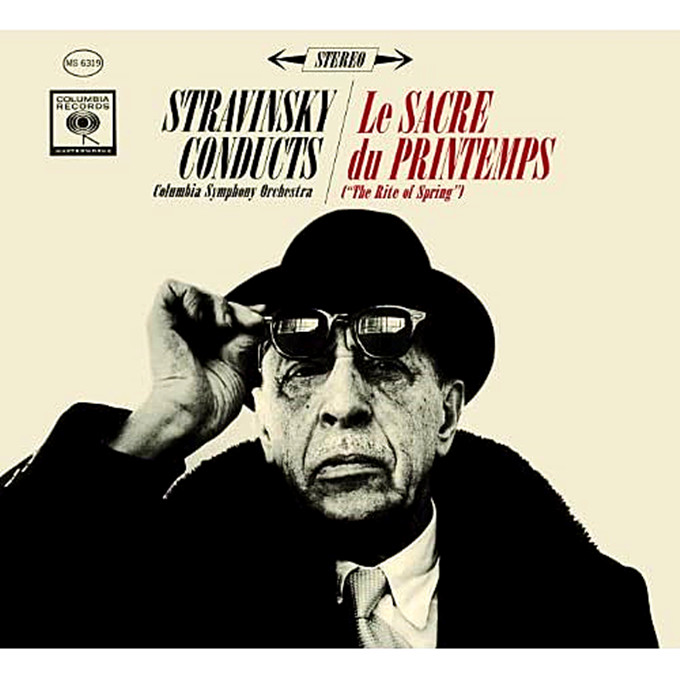 |
|
| |
斯特拉文斯基的芭蕾舞剧《春之祭》唱片封面设计。 |
|
|
|
| |
Today in the
history of music
Stravinsky's "rite of spring" premiered on May 29, 1913.
Stravinsky's the rite of spring has undergone great aesthetic changes in
the past 60 years
The curtain went up on the stage for the premiere of "the rite of
spring," a new ballet under the direction of mondu at the champs elysees
in Paris, France.
When the bassoon reached the highest note of the melody, the French
composer saint sang, who was present, asked the others in surprise:
"what strange instrument is this?"Without looking back, he walked out of
the door of the theatre.Two minutes later, the first sounds of disgust
began to come from the hall, a cat-meow, and the audience on the ground
floor began to echo it.Although the band continued to play, the
audience, tired of the repetitive rhythm and strong dissonance, jeered
from the seats and fired whatever could be found at the band.In the
midst of the stirring orchestra, the audience was evidently divided
between supporters and opponents, and the quarrel grew into fighting,
the chairs became temporary weapons, and the theatre was in such
disorder that it was necessary to call in a multitude of policemen to
keep order among the already frenzied audience.Some of the protesters
even shouted to kill stravinsky, so much so that the composer jumped out
of the window to escape.
Sixty years later, on June 6, 1973, the play was again performed in the
same theatre, where the same wild scene took place, but this time the
whole audience rose from their seats to give a hearty cheer to the great
musical piece of the dance drama.
Stravinsky's ballet "the rite of spring" was a revolution completely cut
off from classical music in music, rhythm, harmony and many other
aspects.
Originally conceived as a symphony, "the rite of spring" persuaded
stravinsky to turn it into a ballet.Nevertheless, the work is usually
performed in the form of a symphony concert.The score of this piece was
completed in March 1913, which is his third ballet music work. It was
selected by Classical CD Magazine as the top 50 works with the greatest
influence on the history of western music.
Today's video: 1. Tilson Thomas conducts stravinsky's "rite of spring"
with the San Francisco symphony orchestra;2. Mr. Djeev directs the
mariinsky theater's production of stravinsky's ballet "the rite of
spring." |
|
|
|
| |
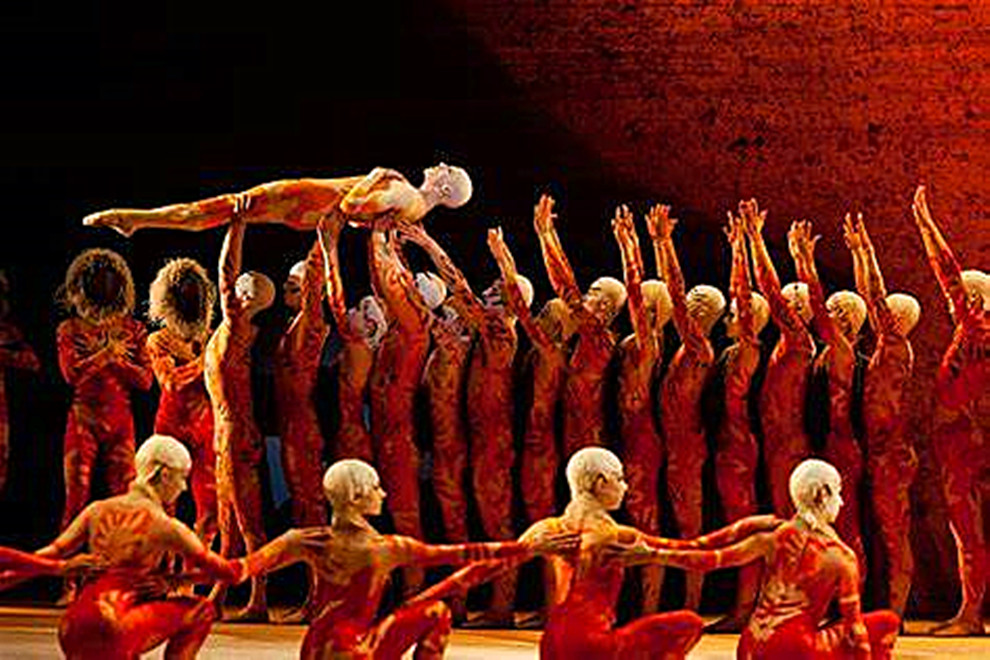 |
|
| |
斯特拉文斯基的芭蕾舞剧《春之祭》剧照 |
|
|
|
| |
芭蕾舞剧《春之祭》介绍 |
|
|
|
| |
整部芭蕾舞剧共分为两大部分,
前一部分有八段,后一部分有六段。
第一部分:大地的崇拜
引子——舞剧以独奏大管在高音区吹出的一支阴郁的立陶宛民间曲调开场,它那神秘的音响把我们带到了史前时期的一座孤寂的山谷。在这里,春天即将来临,大地逐渐苏醒,一群男女在静静地沉思。
大地回春;少女舞曲——这一段以模仿沉重踏步的节奏作为开始,少女们和着这种粗野的节奏而跳舞。这是“春天到来”的欢乐宣告。
诱拐之舞——这是整部舞剧中最粗野、最恐怖的一段,舞蹈也是激烈而粗犷的。整个乐队变得越来越喧闹,不时还传来雷鸣般的爆裂声。
春之轮舞——单簧管奏起了似乎无始无终的抒情旋律,像一支牧歌,充满了质朴的思慕之情,同时又表达出热烈的愿望。
对垒游戏——一场描写部落间战斗的舞蹈。在舞剧中,这是一段两人一组的体操般的舞蹈,而乐队则用一支受到“古怪而有力”的节奏交替支撑和推进的旋律,来为这一舞蹈伴奏。
长者的行列——四支法国号以不同的调性,庄严而有力地宣告长者的到来。这时,打击乐器用各种节奏来作伴奏,其中还有弦乐器的颤音缠绕其间,呈现出在远古的献祭仪式上香烟缭绕的情景。
大地的崇拜——这一段仅四小节,以一个轻微而神秘的不协和和弦构成,是上一段突然刹住后的一个尾音,它与先前的轰然巨响形成鲜明的对比。
大地之舞——这是一段气氛热烈、力度与配器变化多端的音乐。当这一音乐最后上升到极度狂乱的音响时,全曲的第一部分在乐队的沉重切分和弦音响中,以最强音结束。
第二部分:献祭
引子——斯特拉文斯基曾为这个引子取名为“异教徒之夜”。
这段音乐描写出献祭前夜的沉思:长者和少女们围坐在篝火旁,他们都沉思不语,因为要从这些少女中挑选一个作牺牲者——她将不停地跳舞,直至死去,这就是对大自然的献祭。
十、少女神秘的环旋舞——为表现精细效果而细分成十三个声部的弦乐器组,奏起了一支阴沉的、忏悔似的旋律;这是青年们在舞蹈。
十一、对被选少女的颂赞——这段表现被选少女与其他少女们和男青年的两段舞蹈。音乐节奏复杂,节拍多变。
十二、祖先的召唤——在低音单簧管和低音弦乐器低沉的长音背景下,木管乐器和铜管乐器的一连串蛮横和弦,令人心焦地反复奏响。它们不时被定音鼓和低音鼓打断,这鼓声仿佛是在催促被选少女跳“献祭舞”。
十三、祖先的仪式——英国管奏出一支粗野的歌,仿佛一个原始的咒语,全场为之震惊,并在这激发原始人举行神秘祭仪的咒语声中感到颤栗。
十四、被选少女的献祭舞——这最后一段音乐是整个献祭仪式的最高潮。被选少女经过前几段音乐的催促,在彷徨以及因惧怕而神思恍惚之后,终于跳起了献祭舞。被选少女在越来越粗野的音乐声中,精疲力尽地倒下——她终于将自己的生命献给了大地和春天。
这里仅仅选录了全剧中最为著名的第十四段音乐——被选少女的献祭舞,其内容与风格都具有最显著的代表性。
|
|
|
|
| |
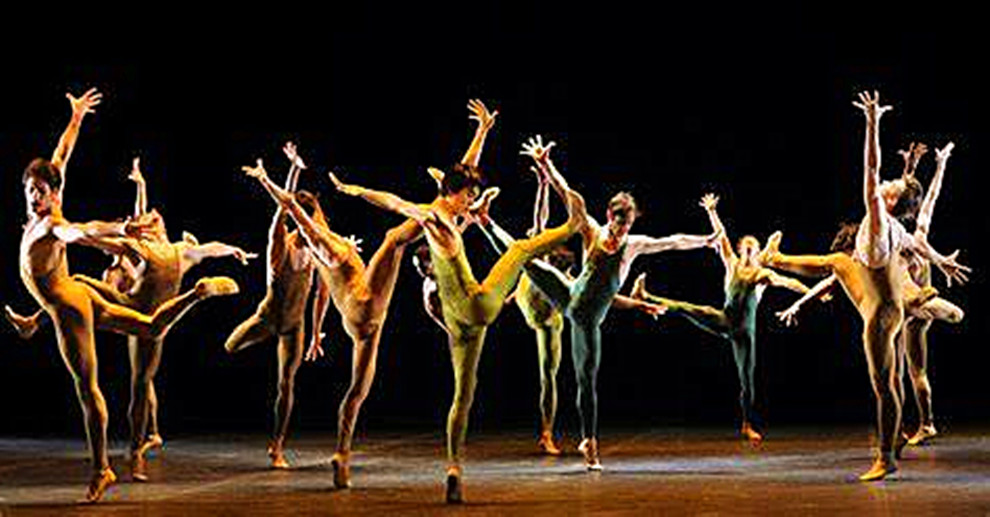 |
|
| |
Introduction to the ballet the rite of spring
The whole ballet is divided into two parts,
The first part has eight paragraphs, and the second part has
six.
Part one: the worship of the earth
Introduction - the dance begins with a sulky Lithuanian folk
tune played by solo pipes in the high notes, and its mysterious
sound takes us to a lonely valley in prehistoric times.Here,
spring is coming, the earth is gradually waking up, a group of
men and women in quiet meditation.
The earth springs again;Girl-dance - the passage begins with a
cadence that imitates the tramp to which the girls dance.It was
a joyous declaration of the arrival of spring.
The dance of abduction -- this is the roughest and scariest part
of the whole dance, and the dance is fierce and rough.The whole
band grew louder and louder, with occasional thunderous
crackles.
Spring dance - clarinet playing seemingly endless lyric melody,
like a pastoral, full of simple yearning, but also express a
warm desire.
Matchup game - a dance depicting inter-tribal battles.In the
dance drama, it is a gymnastic dance in pairs, accompanied by a
melody alternately supported and propelled by an "odd and
powerful" rhythm.
The procession of the elders -- the four French trumpets
announced the arrival of the elders solemnly and forcefully in
different tones.At this time, the percussion instruments are
accompanied by various rhythms, among which are the tremolo of
stringed instruments, showing the smoke wreathed in the ancient
sacrificial ceremony.
The adoration of the earth - this passage is only four bars long
and consists of a slight and mysterious chord of dissonance, a
final note that comes to a sudden halt after the previous
passage, in sharp contrast to the previous roar.
The dance of the earth - this is a piece of music with warm
atmosphere, varying intensity and arrangement.The first part of
the whole song ends on the strongest note in the band's heavy
syncopated and chord sound, as the music finally rises to a
frenzy of sound.
Part two: sacrifice
Introduction -- stravinsky once named this introduction "pagan
night."The music describes a meditation on the eve of the
sacrifice: the elders and maidens were sitting round the fire,
and they were all silent, for one of these maidens was to be
chosen as the victim -- she would dance on and on until she
died, and that was the sacrifice to nature.
Ten, the girl's mysterious circular dance -- for the performance
of fine effect and subdivided into 13 parts of the string
instrument group, played a gloomy, penitent melody;This is the
young people dancing.
11. Ode to the chosen girl -- a two-part dance that shows the
chosen girl with other girls and young men.The music has a
complex and varied rhythm.
The call of the forebears -- against the background of the deep,
long notes of the bass clarinet and the bass stringed
instruments, a series of savage chords of woodwind and brass
instruments are played over and over again.They are punctuated
by timpani and bass drums, which seem to urge the chosen maiden
to dance the "sacrificial dance."
13. Ancestral rite -- the English piped out a wild song, like a
primitive incantation, which shocked the whole audience and made
them tremble in the sound of the incantation that had inspired
the primitive people to hold the mystic rite.
The chosen girl's sacrificial dance -- this last piece of music
is the climax of the entire sacrificial ceremony.Urged by the
first few pieces of music, the girl who was selected finally
danced the sacrificial dance after wandering and being in a
trance due to fear.The girl who is chosen falls down exhausted
in the sound of more and more wild music -- she finally gives
her life to the earth and the spring.
Only the most famous 14th piece of music, the sacrificial dance
of the selected girls, is selected here, and its content and
style are most representative. |
|
|
|
| |
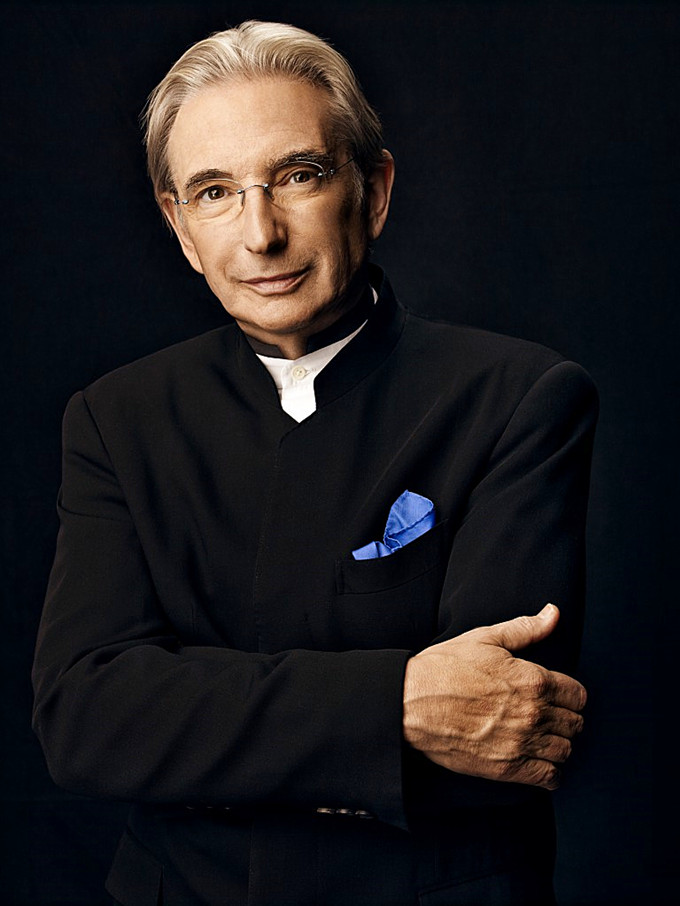 |
|
|
|
| |
迈可·蒂尔森·托马斯(Michael
Tilson Thomas) |
|
|
|
| |
迈可·蒂尔森·托马斯(Michael
Tilson
Thomas);(出生于1944年12月21日,洛杉矶,加利福尼亚,美国),美国指挥的古典音乐作曲家、钢琴家、教育家指出当代美国的冠军是谁的创始人兼董事音乐作曲家和迈阿密的新世界交响曲和旧金山交响乐团的音乐总监。
蒂尔森·托马斯来自一个富有创造力的家庭。他的祖父母贝西(Bessie)和鲍里斯•托马谢夫斯基(Boris
Thomashefsky)是俄罗斯移民,是纽约市人民剧院(People’s
Theater)的创始人,该剧院是意第绪语剧院(Yiddish literature: Yiddish
theatre)的主要中心。他的父亲泰德·托马斯(Ted
Thomas,简称托马斯·赫夫斯基)在搬到西海岸从事电影和电视工作之前,也曾在纽约从事戏剧工作。蒂尔森·托马斯的母亲罗伯塔曾在哥伦比亚电影公司工作。蒂尔森·托马斯(Tilson
Thomas)学习钢琴,1967年在南加州大学(University of Southern
California)获得音乐硕士学位。他还在大学里学习指挥,19岁时被任命为青年音乐家基金会首演管弦乐队的音乐总监。1969年,他成为波士顿交响乐团的助理指挥,后来被任命为首席客座指挥。从1971年到1979年,蒂尔森·托马斯担任布法罗爱乐乐团的音乐总监。在那段时间里,他遇到了作曲家和指挥家伦纳德·伯恩斯坦(Leonard
Bernstein),伯恩斯坦后来成为他重要的导师和朋友。20世纪70年代,蒂尔森·托马斯像伯恩斯坦一样,定期指挥纽约爱乐乐团的青年系列音乐会。
蒂尔森·托马斯于1981年成为洛杉矶爱乐乐团的首席客座指挥,并一直担任到1985年。两年后(直到1995年),他成为伦敦交响乐团的首席指挥。1987年,他成立了新世界交响乐团,由世界各地最好的音乐项目的毕业生组成。在21世纪,新世界交响乐团作为古典音乐未来领袖的学院和孵化器,作为更大社区的文化和教育资源,为迈阿密各地的学校儿童提供古典音乐表演和音乐课的机会。
蒂尔森·托马斯于1995年成为旧金山交响乐团的音乐总监。他和交响乐团制作了《记分》(Keeping Score,
2004-11),这是美国公共广播公司(PBS)的系列纪录片,探索著名作曲家的职业生涯,其中包括旧金山交响乐团(San
Francisco symphony
Orchestra)的表演。在他的职业生涯中,蒂尔森·托马斯以支持在世作曲家的作品和表演基于多种剧目的实验性节目而闻名。他是法国艺术与文学骑士,2006年被选入美国艺术与科学学院。他还被奥巴马总统授予2009年国家艺术奖章。 |
|
|
|
| |
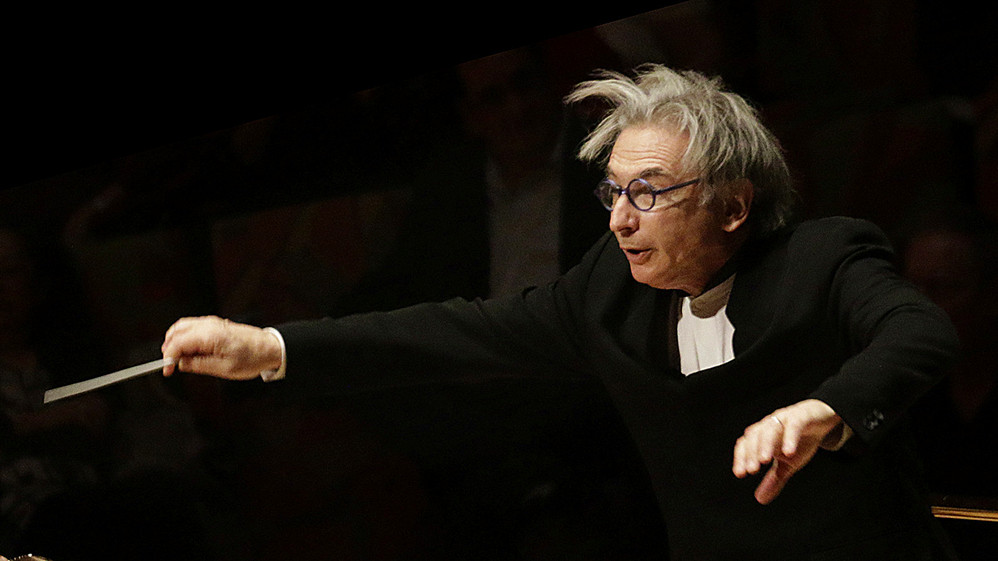 |
|
| |
迈可·蒂尔森·汤玛斯(Michael
Tilson Thomas) |
|
|
|
| |
Michael
Tilson Thomas, (born December 21, 1944, Los Angeles, California,
U.S.), American conductor and composer of classical music,
pianist, and educator who is noted as a champion of contemporary
American composers and as the founder and music director of
Miami’s New World Symphony and the music director of the San
Francisco Symphony.
Tilson Thomas came from a line of creative family members. His
paternal grandparents, Bessie and Boris Thomashefsky, were
Russian immigrants and founders of the People’s Theater in New
York City, a major centre of Yiddish theatre (see Yiddish
literature: Yiddish theatre). His father, Ted Thomas (shortened
from Thomashefsky), was involved in theatre in New York as well
before moving to the West Coast to pursue film and television
work. Tilson Thomas’s mother, Roberta, worked at Columbia
Pictures. Tilson Thomas studied piano and earned a master’s
degree in music in 1967 from the University of Southern
California. He also studied conducting in college and at age 19
was named music director of the Young Musicians Foundation Debut
Orchestra. In 1969 he became the assistant conductor of the
Boston Symphony Orchestra, and he was later named principal
guest conductor. From 1971 to 1979 Tilson Thomas served as the
music director of the Buffalo Philharmonic. During that period
he met composer and conductor Leonard Bernstein, who became a
significant mentor and friend. During the 1970s Tilson Thomas,
like Bernstein before him, regularly conducted the New York
Philharmonic for its Young People’s Concert series.
Tilson Thomas became the principal guest conductor with the Los
Angeles Philharmonic in 1981 and held that position through
1985. He then became the principal conductor of the London
Symphony Orchestra two years later (through 1995). In 1987 he
established the New World Symphony, composed of recent graduates
of the best music programs from around the world. In the 21st
century the New World Symphony served as an academy and
incubator for future leaders in classical music and as a
cultural and educational resource for the larger community,
providing access to classical music performances as well as
music lessons to school children throughout Miami.
Tilson Thomas became the music director of the San Francisco
Symphony Orchestra in 1995. He and the symphony produced Keeping
Score (2004–11), a PBS series of documentaries that explores the
careers of notable composers and includes a performance by the
San Francisco Symphony Orchestra. Over the course of his career,
Tilson Thomas became known for championing the work of living
composers and performing experimental programs that drew on a
diverse repertory. He is a Chevalier des Arts et des Lettres of
France and was elected to the American Academy of Arts and
Sciences in 2006. He was also awarded the 2009 National Medal of
Arts by Pres. Barack Obama. |
|
|
|
| |
|
|
|
|
| |
|
|
|
|
| |
捷杰耶夫指挥马林斯基剧院演绎斯特拉文斯基的芭蕾舞剧《春之祭》 |
|
|
|
| |
Djeev directs the mariinsky theater in the
production of stravinsky's ballet "the rite of
spring." |
|
|
|
| |
2009年 马林斯基剧院 伊戈尔·斯特拉文斯基晚会
指挥:瓦莱利·捷杰耶夫
作曲:伊戈尔·斯特拉文斯基
编舞:米哈伊尔·福金
作品:《火鸟》《春之祭》
主演:Ekaterina Kondaurova等 |
|
|
|
| |
|
|
|
|
| |
未得原作者编者授权严禁转载www.mt77.com任何内容 |
|
|
|
|
|
|
|
|
|
|
|
|
|
|


